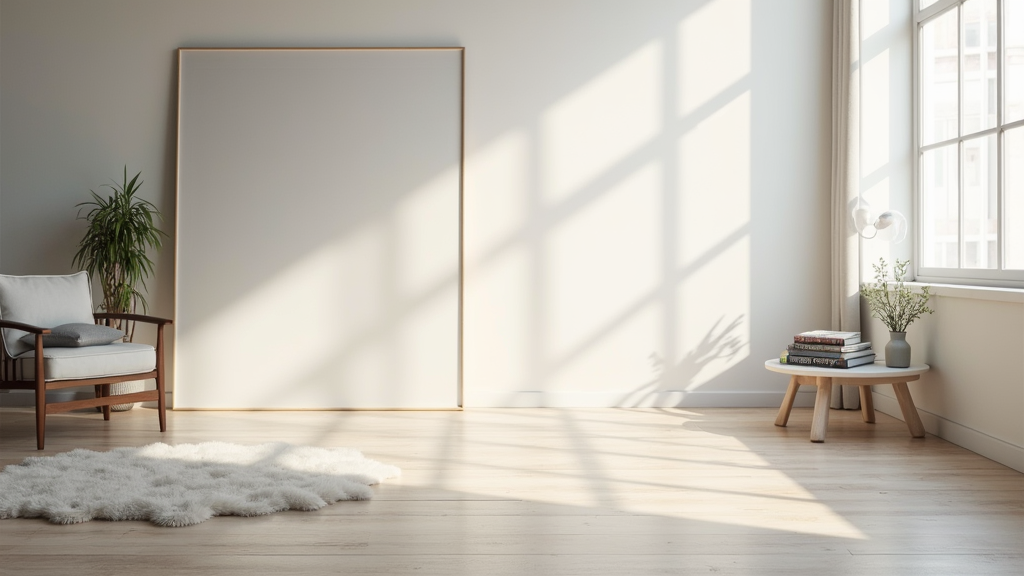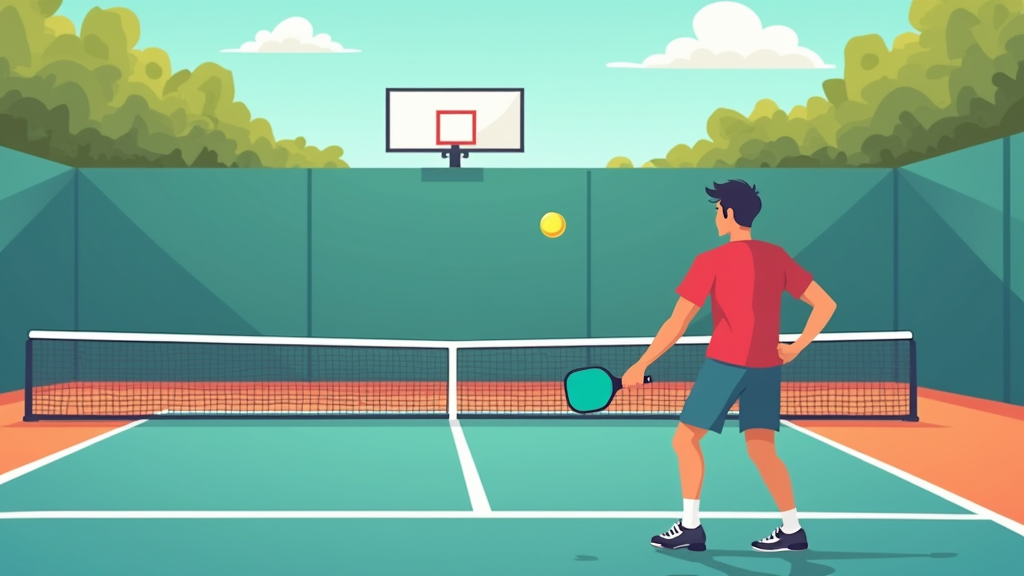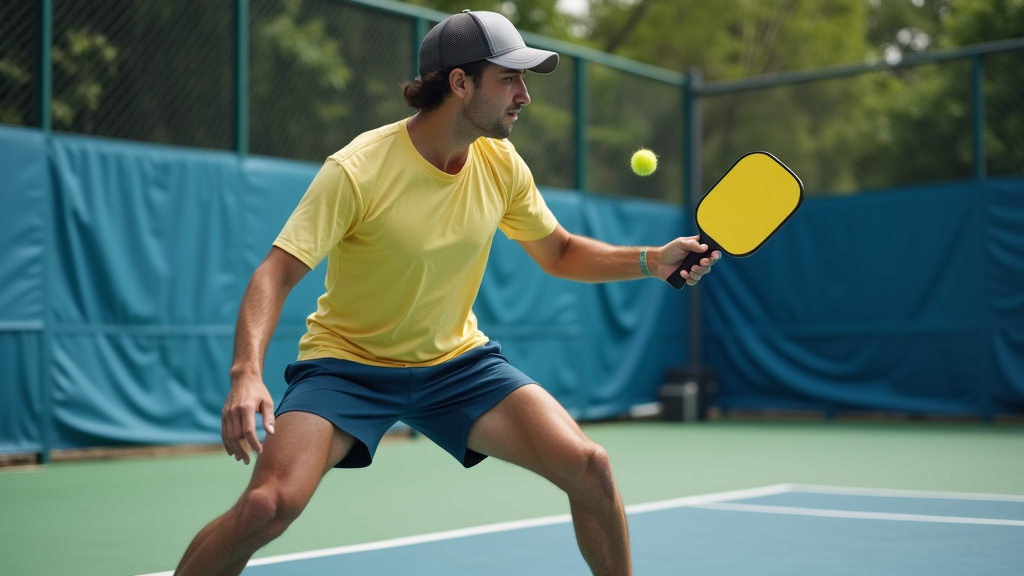Table of Contents
- Introduction
- Understanding the Basics
- Detailed Guide
- Serving Rules and Techniques
- Scoring System
- Gameplay Rules
- Faults and Lets
- Equipment and Apparel
- Where to Play Pickleball
- Etiquette and Sportsmanship
Introduction

Overview and Importance
Pickleball is a rapidly emerging sport that blends the best aspects of badminton, ping-pong, and tennis, creating a unique and engaging experience for players of all skill levels. Its accessibility and simple rules make it an attractive option for individuals seeking a fun and social way to stay active.
The sport’s popularity has exploded in recent years, particularly in the United States, where it’s become a favorite pastime for people of all ages. Key statistics highlight its impressive growth, with participation rates soaring and new pickleball courts popping up across the country. This surge in popularity underscores the sport’s appeal as an easy-to-learn, social activity that also provides a great workout.
The beauty of pickleball lies in its simplicity. Unlike some racquet sports that require years of dedicated practice to become proficient, pickleball can be picked up relatively quickly. This ease of learning, combined with its social nature and physical benefits, makes it an ideal sport for anyone looking to get involved in a new and exciting activity.
Background
The origins of pickleball can be traced back to 1965, when it was invented on Bainbridge Island, Washington. The creators sought to develop a game that the whole family could enjoy, utilizing elements from badminton, ping-pong, and tennis. The result was a sport that’s both familiar and refreshingly different.
In recent years, pickleball has experienced a remarkable surge in popularity, fueled by its accessibility and social appeal. This growth has led to a significant increase in the number of pickleball courts and leagues worldwide, transforming it from a niche activity into a mainstream sport. From local community centers to dedicated pickleball facilities, opportunities to play are becoming increasingly abundant.
What You’ll Learn
This guide will provide you with a comprehensive understanding of pickleball, covering everything from the core concepts to practical applications. You’ll learn about the essential elements of the game, including serving techniques, the unique scoring system, and the crucial two-bounce rule.
We’ll also delve into the intricacies of the non-volley zone, often referred to as the “kitchen,” and how it impacts gameplay. By the end of this guide, you’ll have a solid grasp of the rules and strategies necessary to play a competitive game of pickleball.
Beyond the theoretical aspects, this guide will also equip you with the practical knowledge you need to get started. You’ll learn how to play a game, understand the official rules, and discover resources for finding local pickleball courts and communities. Whether you’re a complete beginner or looking to refine your skills, this guide will provide you with the tools and information you need to enjoy the exciting world of pickleball.
Understanding the Basics
Fundamental Concepts
Pickleball, a sport that’s rapidly gaining popularity, combines elements of tennis, badminton, and table tennis. To truly appreciate and excel in the game, it’s essential to grasp some fundamental concepts. Let’s dive into the key definitions and core principles that form the backbone of pickleball.
- Volley:A volley occurs when a player hits the ball in the air before it bounces. This is a key offensive tactic in pickleball, allowing for quick reactions and aggressive plays.
- Fault:A fault is any rule violation that stops play. Common faults include hitting the ball out of bounds, not clearing the net, or volleying the ball in the non-volley zone before it has bounced on each side of the court.
- Non-Volley Zone:Often referred to as the “kitchen,” the non-volley zone is the area within 7 feet of the net on both sides of the court. Players cannot volley the ball while standing within this zone.
- Serve:The serve initiates each point. It must be an underhand stroke, and the ball must be hit below the server’s waist.
Beyond the definitions, understanding the core principles is crucial for successful gameplay.
- Underhand Serve:The serve must be executed with an underhand motion. This helps control the pace and trajectory of the serve, emphasizing placement over power.
- Diagonal Service:The serve must be directed diagonally across the net and land within the service court on the opposite side. This ensures fair play and equal opportunity for both teams.
- Two-Bounce Rule:After the serve, each team must allow the ball to bounce once on their side of the court before volleying it. This rule mitigates aggressive net play early in the point and promotes longer rallies.
- Non-Volley Zone Restrictions:Players are prohibited from volleying the ball while standing in the non-volley zone. This prevents players from dominating the net and encourages strategic shot placement.
Essential Components
Now that we’ve covered the fundamental concepts, let’s explore the essential components needed to play pickleball. From the equipment to the court itself, each element contributes to the unique experience of the game.
- Required elements:Paddle, ball, court, net, court shoes.
Each of these elements has key features that contribute to the game.
The court dimensions are a primary aspect to understand. Pickleball is played on a court that is 20 feet wide and 44 feet long. The net height is another critical factor. It measures 36 inches at the sides and 34 inches in the middle, influencing the trajectory of shots and net play.
Paddle material can significantly impact performance. Composite or graphite paddles are generally recommended for their lightweight feel and responsiveness. The type of ball also matters; outdoor balls are typically harder and heavier than indoor balls to withstand wind and provide better flight characteristics.
Finally, understanding the variations in gameplay is crucial. Pickleball can be played as singles or doubles. Doubles is more common, emphasizing teamwork and communication, while singles requires greater court coverage and individual skill.
Detailed Guide

Preparation
Before stepping onto the pickleball court, proper preparation is key to ensuring a safe and enjoyable experience. This involves gathering the necessary equipment, understanding the court layout, and taking important pre-game considerations.
- Required Materials:You’ll need a pickleball paddle that suits your grip and playing style. Pickleball balls come in outdoor and indoor versions, each designed for specific playing conditions. Court shoes are essential for providing the necessary support and traction, reducing the risk of injury. Finally, wear comfortable, breathable clothing that allows for a full range of motion.
- Initial Setup:Finding a suitable pickleball court is the first step. Many public parks, recreation centers, and gyms offer pickleball courts. Familiarize yourself with the court layout, including the non-volley zone (or “kitchen”), service areas, and baselines. Understanding these boundaries is crucial for proper gameplay.
- Important Considerations:Always warm up before playing. Simple exercises like squats, lunges, and arm circles can help prepare your muscles and prevent injuries. Check local rules and regulations, as some courts may have specific guidelines regarding equipment, playing times, or etiquette.
Step-by-Step Process
Once you’re prepared, understanding the fundamental steps of pickleball is vital for playing the game correctly. From serving to scoring, here’s a breakdown of the key processes:
- Clear Instructions:
- Best Practices:Positioning yourself near the non-volley zone line allows for strategic volleys and dinks. In doubles play, effective communication with your partner is essential for coordinating movements and covering the court.
- Common Mistakes to Avoid:Avoid stepping into the non-volley zone while volleying the ball, as this results in a fault. Also, avoid serving overhand, as this is illegal in pickleball.
- Serving:The serve must be underhand, with the paddle making contact with the ball below the wrist. The serve must be diagonal, landing in the opposite service court.
- Scoring:Only the serving team can score points. Games are typically played to 11 points, and you must win by 2 points.
- Two-Bounce Rule:After the serve, the ball must bounce once on each side of the net before either team can volley the ball (hit it in the air). This is known as the “two-bounce rule.”
- Non-Volley Zone:The non-volley zone, or “kitchen,” is a 7-foot area on each side of the net. Players cannot volley the ball while standing within this zone.
Advanced Techniques
For players looking to elevate their game, mastering advanced techniques can provide a competitive edge. These techniques involve strategic positioning, shot selection, and adaptability.
- Expert Tips:Controlling the kitchen (Non-Volley Zone) is crucial for dictating the pace of the game. Dinking, which involves hitting soft shots that land just over the net in the non-volley zone, can disrupt your opponent’s rhythm. Strategic positioning, such as anticipating your opponent’s shots and moving accordingly, can significantly improve your court coverage.
- Optimization Methods:Improving your serve placement, targeting your opponent’s weaknesses, can lead to easy points. Developing a strong backhand expands your offensive options. Mastering the drop shot, a soft shot that lands just over the net, forces your opponent to approach the net and can create opportunities for passing shots.
- Troubleshooting:Dealing with windy conditions requires adjusting your shot trajectory and using spin to control the ball. Adjusting to different court surfaces, such as indoor or outdoor courts, may require modifying your footwork and shot selection. Handling aggressive opponents involves staying calm, using strategic dinks and drops to slow down the pace, and exploiting their over-aggression.
Serving Rules and Techniques
Basic Serving Guidelines
The serve is your opening act in pickleball, and mastering it is crucial for setting the tone of the rally. While seemingly simple, the serve in pickleball comes with specific rules designed to ensure fairness and prevent immediate advantages.
- The serve must be underhand. This means that when you strike the ball with your paddle, contact must be made below your waist. This rule promotes a more strategic, less aggressive serve.
- Your serve needs to travel diagonally crosscourt. You must aim to land the ball within the confines of the opposite diagonal service court. This crosscourt rule is a fundamental aspect of pickleball, influencing positioning and strategy from the very start of each point.
- In pickleball, you generally only get one shot at serving. Unlike tennis, there are no ‘second serves.’ If you fault on your serve, you lose the point or your team loses the serve in doubles play.
- During your serve, at least one foot needs to be behind the baseline. This prevents servers from gaining an unfair advantage by creeping too close to the net.
- Your feet must stay within the imaginary extensions of both the sideline and the centerline. You cannot step into the playing area untilafteryou’ve made contact with the ball. This ensures that you’re serving from a designated area.
Serving Sequences in Doubles
Serving in doubles pickleball adds another layer of strategy and coordination. Understanding the serving sequence is vital for smooth gameplay.
- In doubles, you and your partner alternate serving until your team loses the point or commits a fault. After winning a point, you and your partner need to switch sides on your side of the court. This ensures even coverage and equal opportunities.
- Your position as the server is dictated by the score. If your team’s score is an even number (0, 2, 4, 6, etc.), you serve from the right-hand side of the court. Conversely, if your team’s score is odd (1, 3, 5, 7, etc.), you serve from the left-hand side. This ensures a consistent and predictable serving rotation.
- In doubles, the serving team gets only one serve at the start of each game. This is indicated in the score by the third number being a ‘2’. For example, at the very beginning of the game, the score is ‘0-0-2’. Only the player on the right side serves first. If the serving team wins the point, they switch sides and continue serving. If they lose the point, the serve goes to the other team.
Drop Serve Option
Pickleball has evolved, and with it, the serving rules have adapted to offer more accessibility and options. One such adaptation is the drop serve.
- The drop serve option allows players to drop the ball and then hit it after it bounces. This eliminates the need to toss the ball into the air, making serving easier for some players. There is no upward arc or waist contact rule associated with the drop serve.
- To execute a legal drop serve, you must use gravity to drop the ball. You can’t throw the ball downward or impart any force onto the ball other than letting it fall naturally. This ensures fairness and prevents players from generating excessive power or spin.
Scoring System

Standard Scoring Rules
In pickleball, understanding the scoring system is crucial for both playing and following the game. A key aspect to remember is that only the serving team can score points. This puts extra pressure on the serve and return, as each rally is an opportunity to either gain or lose the serve.
Standard pickleball games are typically played to 11 points. However, a team must win by at least two points. This means that if the score reaches 10-10, the game continues until one team leads by two points, such as 12-10 or 15-13. This rule adds excitement and can lead to extended rallies and nail-biting finishes.
Scores are announced in a specific format to clearly communicate the game’s status. The format is “My score – Your score – Server number.” For example, in a singles game, if you are serving and the score is 2-4 in your opponent’s favor, you would announce it as “2-4.” If you then lose the point, the serve switches to your opponent, and the score is then announced as “4-2” in their favor. This clear communication helps prevent confusion and ensures everyone knows who is serving and what the score is.
Rally Scoring System (Optional)
While not as common as the standard scoring system, some pickleball games or tournaments may use a rally scoring system. In this system, both the serving and receiving teams can score points. This differs significantly from the standard rules and adds a different strategic dimension to the game.
Similar to the standard system, a team using rally scoring must still win by a two-point lead to secure victory. This ensures that even with both teams able to score on each rally, a clear advantage and consistent performance are still required to win.
The rally scoring system tends to speed up the game and can encourage more aggressive play, as every rally presents an opportunity to score, regardless of who is serving. It also places a greater emphasis on team coordination and strategy, as both offensive and defensive plays can directly translate into points.
Serve Calls
Accurate serve calls are essential for maintaining fair play and preventing misunderstandings. The standard format for serve calls includes the score and the server number. The call is structured as: “Team’s score – Opponent’s score – Server number (1 or 2).”
For example, if you are playing doubles and your team’s score is 3, the opponent’s score is 3, and you are the first server, the serve call would be “3-3-1.” If you were the second server, the call would be “3-3-2.” This system clearly identifies who is serving and helps track the serving sequence, especially important in doubles play.
Furthermore, the server’s location on the court changes based on whether the score is even or odd. When the serving team’s score is even (0, 2, 4, etc.), the server serves from the right/even court. When the score is odd (1, 3, 5, etc.), the server serves from the left/odd court. This rotation ensures that players alternate serving positions and adds another layer of strategy to the game.
Gameplay Rules
Two-Bounce Rule
Pickleball’s unique gameplay is largely defined by the Two-Bounce Rule, a regulation that adds a strategic dimension to the serve and return sequence. This rule stipulates that the ball must bounce once on each side of the net before being volleyed. Specifically, the serve must bounce on the receiver’s side, and the return of the serve must bounce on the server’s side.
The Two-Bounce Rule is only in effect for the serve and the return of the serve. After these initial bounces have occurred, players gain the freedom to volley the ball in the air, adding speed and aggression to their gameplay. The purpose of this rule is to prevent immediate volleying from the service line, which helps extend rallies and allows players closer to the net to get into the game, fostering longer, more engaging play.
Understanding and mastering the Two-Bounce Rule is fundamental to playing pickleball effectively. It dictates positioning, shot selection, and overall strategy, especially during the initial phases of each point.
Line Rules
Accurate line calls are essential in pickleball, as in any court sport. The basic principle is that if any part of the ball touches the line, the ball is considered “in.” This applies to all lines on the court, including the baseline, sidelines, and even the centerline in doubles play.
However, there’s a crucial exception during the serve. The serve must clear the non-volley zone, and it is a fault if the serve touches the non-volley zone line, also known as the kitchen line. This prevents servers from gaining an unfair advantage by dropping the ball just over the net.
Players are responsible for making accurate and honest line calls on their side of the court. When in doubt, it’s generally considered good sportsmanship to give the benefit of the doubt to your opponent.
Non-Volley Zone (Kitchen)
The Non-Volley Zone, often referred to as the “kitchen,” is a seven-foot area on either side of the net. It extends the entire width of the court, measuring 20 feet wide.
This zone is crucial for regulating volleying. Players are prohibited from volleying the ball while standing within the NVZ. This means you can’t hit the ball out of the air while any part of your body is touching the zone or the NVZ lines. However, you can be in the kitchen if you are hitting a ball that has already bounced.
A common fault occurs when a player steps into the NVZ while volleying the ball, even if they step out before the ball lands. The key is that your momentum cannot carry you into the kitchen during a volley. Additionally, it’s a fault if, after volleying outside the NVZ, a player’s momentum causes them to touch the NVZ before their feet touch the ground outside the NVZ.
Mastering the nuances of the Non-Volley Zone is essential for strategic play, dictating when and where you can volley effectively and forcing players to develop a well-rounded game beyond just net play.
Faults and Lets

Common Faults
In pickleball, understanding faults is crucial for fair play and scoring. A fault occurs when a rule is violated, resulting in the loss of a rally. Several actions can lead to a fault, so let’s break down the most common ones.
- Preventing the ball from bouncing once during a serve or return is a fault. Remember, the serve must land diagonally in the opposite service court, and the receiving team must let it bounce before returning. Similarly, the serving team must let the return bounce before playing it.
- Hitting the ball out of bounds is another frequent fault. The lines are considered in, so if any part of the ball touches the line, it’s considered a valid shot.
- During a serve, you must clear the net. Hitting the ball directly into the net or under the net results in a fault. It’s important to aim high enough to clear the net consistently.
- Allowing the ball to bounce twice on your side of the court during normal play is a fault. Once the initial serve and return bounces have occurred, you must hit the ball before it bounces twice.
- Faults can also occur during the serve itself. If the serve lands outside the service area, the server steps over the baseline while serving, or the ball hits the net and lands outside the service area, it’s a fault. Proper foot placement and aiming are key to avoiding these serving faults.
- Finally, be aware of momentum faults in the non-volley zone (NVZ). It’s a fault if your momentum carries you into the NVZ after volleying the ball, even if you didn’t initially step into the zone during the volley. Make sure you are stable and have control of your body after hitting the ball near the NVZ.
Lets
A “let” is a call that stops play, typically due to interference or a specific rule. In pickleball, the most common let involves the serve.
- Let Serve: If the serve hits the net but still lands within the correct service area, it’s called a “let serve.” The server is then allowed to re-serve the ball without penalty. This rule ensures fairness when an otherwise valid serve is affected by the net.
Equipment and Apparel
Pickleball Ball
Choosing the right pickleball ball is crucial for enjoying the game and optimizing your performance. You’ll find that pickleball balls are specifically designed for either indoor or outdoor play, and the differences are significant. Outdoor balls are typically made to be more durable to withstand the elements, especially wind. They tend to be a bit harder and heavier than indoor balls.
For outdoor courts, which are usually asphalt or concrete, a harder ball is ideal. Indoor balls, on the other hand, are softer and designed for play on smoother surfaces like hardwood. This helps to control the speed of the game and prevent damage to the indoor court. Regardless of whether you choose an indoor or outdoor ball, make sure it’s made of plastic with holes and approved by reputable associations like USA Pickleball to ensure quality and consistent play.
Pickleball Court and Net
Pickleball courts are becoming increasingly common, with many recreational facilities and community centers offering dedicated spaces for the sport. However, one of the great things about pickleball is that you can also set up a portable court almost anywhere with a flat surface. This makes it accessible and convenient for players of all levels.
The court itself is divided by a net, creating distinct zones that dictate gameplay. Understanding these zones is essential for playing strategically. The primary zones are the in-bounds area, the out-of-bounds area (hitting the ball out results in a fault), and the non-volley zone, often called the “kitchen.” Players cannot volley (hit the ball in the air) while standing within the kitchen.
For official play, a pickleball court measures 20 feet wide and 44 feet long. The net is positioned in the middle, dividing the court into two equal halves. The height of the net is 36 inches at the sidelines and 34 inches in the center, which is slightly lower than a tennis net. These dimensions are standardized to ensure fair and consistent gameplay.
Pickleball Paddle
Selecting the right pickleball paddle can significantly impact your game. When starting out, it’s generally recommended to choose a paddle made from graphite or a composite material. These materials offer a good balance of power, control, and weight, making them ideal for beginners.
It’s best to avoid the cheapest wooden paddles, as they tend to be heavier and less responsive, which can hinder your progress. Composite paddles offer versatility and a more forgiving feel, allowing you to develop your skills more effectively. There are various materials to choose from, including wood, composite, and graphite. A lightweight paddle is generally recommended for beginners, as it allows for quicker reactions and less strain on the arm.
Appropriate Apparel
When it comes to apparel for pickleball, comfort and functionality are key. Opt for comfortable, loose-fitting clothing that allows for a full range of motion. However, investing in good shoes specifically designed for pickleball is crucial for preventing injuries and enhancing your performance.
The type of shoes you choose will depend on the court surface. For hard courts, such as asphalt or concrete, tennis shoes are a good option. If you’re playing on wooden floors, like in a gymnasium, basketball, volleyball, or badminton shoes are more suitable. It’s important to avoid running shoes, as they are designed for forward motion and lack the lateral support needed for pickleball’s quick side-to-side movements.
Court shoes are highly recommended for pickleball players of all levels. They provide excellent grip and support, allowing you to move confidently and safely on the court. Proper footwear will not only improve your game but also protect you from potential injuries.
Where to Play Pickleball

Finding Local Courts
One of the best things about pickleball is how accessible it is. Courts are popping up everywhere, both indoors and outdoors, making it easier than ever to find a game. You’ll often find pickleball courts at your local parks and recreation centers, YMCAs, and even some schools.
The USA Pickleball Association (USAPA) offers a fantastic resource on their website called “Places to Play.” This tool allows you to search for courts near you, providing addresses, contact information, and sometimes even details about court surfaces and amenities. It’s a great starting point for discovering pickleball locations in your area.
Don’t underestimate the power of local community centers! Many community centers offer pickleball programs, open play times, and even lessons. Give your local center a call or check their website for schedules and availability. They often have very affordable options for getting involved.
Another great way to find courts and connect with fellow players is through online communities. Search Facebook and Google for local pickleball groups in your area. These groups are often filled with passionate players who are happy to share information about court locations, organized play, and upcoming events. You might even discover hidden gem courts you wouldn’t find anywhere else!
Etiquette and Sportsmanship
General Guidelines
Pickleball, while competitive, thrives on a foundation of respect and good sportsmanship. Maintaining a positive attitude and treating fellow players with courtesy enhances the experience for everyone on the court.
A fundamental aspect of pickleball etiquette is demonstrating respect for your opponents. This is commonly shown by offering a friendly gesture after each match, such as a handshake or a paddle tap. This simple action acknowledges the effort and skill of your opponent, regardless of the outcome.
Fair play is paramount in pickleball. Calling lines accurately and honestly is crucial. When disputes arise, address them calmly and respectfully. Avoid heated arguments, and strive for a resolution that is fair to both sides. Remember, maintaining a positive atmosphere is more important than winning a single point.
To ensure smooth gameplay, be willing to replay points when necessary. This can occur if there is interference, uncertainty about a call, or any other situation that disrupts the flow of the game. Replaying points allows for a fair resolution and prevents unnecessary arguments, keeping the game enjoyable for all participants.

